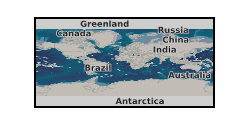Physical properties
Type of resources
Topics
Keywords
Contact for the resource
Provided by
Years
Formats
Representation types
Update frequencies
-

The dataset contains triaxial compressive strength data of salt samples collected from the Northwich Halite Member at the Winsford Mine in Cheshire, UK. Each sample was subjected to varying strain or displacement-equivalent rates under conventional triaxial stress conditions to evaluate its mechanical response to different loading conditions. The experiments were conducted over two testing campaigns between July 2022 and August 2023, using a servo-controlled stiff load frame in the Rock Mechanics and Physics Laboratory at the British Geological Survey, Keyworth, UK. The dataset is organized into individual Microsoft Excel files, each corresponding to a single test and containing parameters such as time, force, stress, displacement, and strain. A summary file detailing sample characteristics and test conditions is also included.
-

This dataset consists of sentences extracted from BGS memoirs, DECC/OGA onshore hydrocarbons well reports and Mineral Reconnaissance Programme (MRP) reports. The sentences have been annotated to enable the dataset to be used as labelled training data for a Named Entity Recognition model and Entity Relation Extraction model, both of which are Natural Language Processing (NLP) techniques that assist with extracting structured data from unstructured text. The entities of interest are rock formations, geological ages, rock types, physical properties and locations, with inter-relations such as overlies, observedIn. The entity labels for rock formations and geological ages in the BGS memoirs were an extract from earlier published work https://github.com/BritishGeologicalSurvey/geo-ner-model https://zenodo.org/records/4181488 . The data can be used to fine tune a pre-trained large language model using transfer learning, to create a model that can be used in inference mode to automatically create the labels, thereby creating structured data useful for geological modelling and subsurface characterisation. The data is provided in JSONL(Relation) format which is the export format from doccano open source text annotation software (https://doccano.github.io/doccano/) used to create the labels. The source documents are already publicly available, but the MRP and DECC reports are only published in pdf image form. These latter documents had to undergo OCR and resulted in lower quality text and a lower quality training data. The majority of the labelled data is from the higher quality BGS memoirs text. The dataset is a proof of concept. Minimal peer review of the labelling has been conducted so this should not be treated as a gold standard labelled dataset, and it is of insufficient volume to build a performant model. The development of this training data and the text processing scripts were supported by a grant from UK Government Office for Technology Transfer (GOTT) Knowledge Asset Grant Fund Project 10083604
-

This dataset contains raw experimental direct shear testing data as presented by "Ougier-Simonin, A., Castagna, A., Walker, R. J., & Benson, P. M. (2018). Frictional and mechanical behavior of simulated, sedimentary fault gouges. In AGU Fall Meeting Abstracts (Vol. 2018, pp. T11E-0212)". The data is provided in a .zip folder containing the files of 8 experiments that are accompanied by a README file for introduction. Files format is Microsoft Excel Worksheet (.xlsx) and data are tabulated. Each file contains the corresponding relevant sample’s details, and each column of data is clearly labelled, units included. For each experiment, time, axial force, axial displacement, axial stress, confining displacement, confining pressure, internal temperature, and axial delta P were recorded. Details of calculations for shear stress and coefficient of friction are also provided. Eight gouge (rock powder) samples of Monte Salici sandstone (Numidian Flysch, Appenninic-Maghrebian Chain; Sicily), ‘Comiso’ limestone (Ragusa Formation; Sicily) and Quaternary Clays (blue-grey clay in Fiumefreddo, Sicily) were tested in direct shear using sliding holders in triaxial compression at a confining pressure of 50 MPa. After 4 mm of axial (shear) displacement at 1 micron per second, variable rates of axial displacement were applied to induce velocity steps condition and measure rate-and-state parameters. Maximum displacement: ca. 9.8mm. All tests done at room temperature. The experiments were conducted by Drs A. Castagna and A. Ougier-Simonin using the MTS815 Rock Testing System in triaxial configuration and homemade sliding holders in the Rock Mechanics and Physics Laboratory of the British Geological Survey; both responsible for the collection and initial interpretation of the data. One test presented an issue on one of the signals recorded; the data are still shared for information purposes and the corresponding set of data is clearly named to indicate this fact.
-

The dataset contains unconfined compressive strength data of salt samples collected from the Northwich Halite Member at the Winsford Mine in Cheshire, UK. Each sample was unconfined and deformed under standard uniaxial stress conditions, where the primary principal stress corresponds to the axial stress and the intermediate and minimum principal stresses are equal to 0. Each sample was axially compressed using either a constant strain rate of 1e-5 per second or a constant loading rate of 200 N/s. The tests were completed using a servo-controlled stiff load frame in the Rock Mechanics and Physics Laboratory at the British Geological Survey, Keyworth UK. The data are separated into individual Microsoft Excel files, with each file representing a single test. Each file contains time, force, stress, displacement, and strain data.
 NERC Data Catalogue Service
NERC Data Catalogue Service